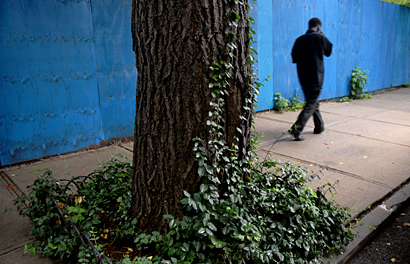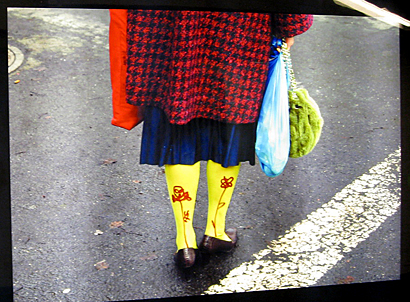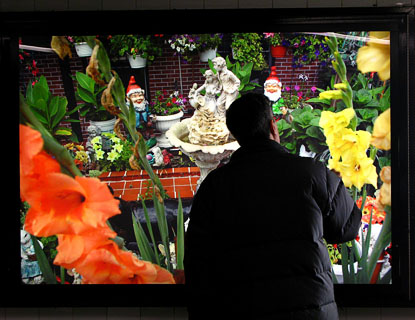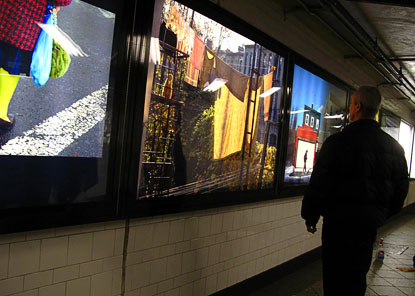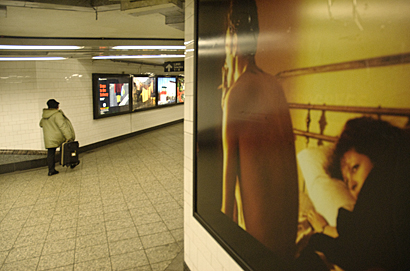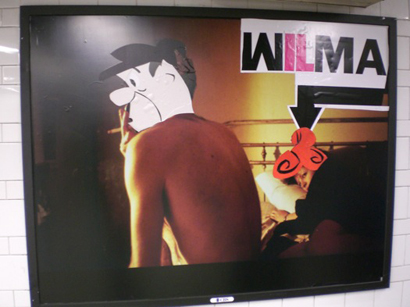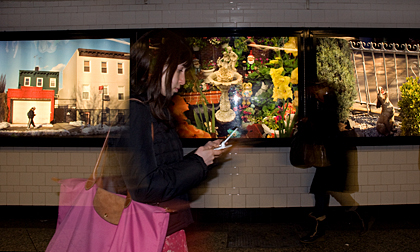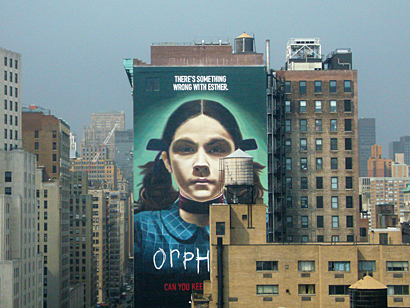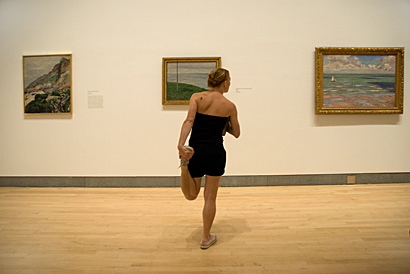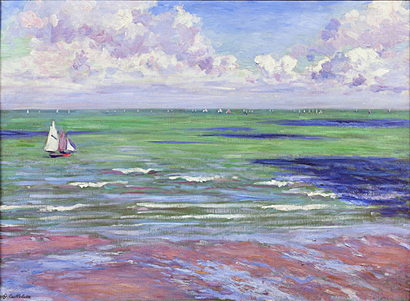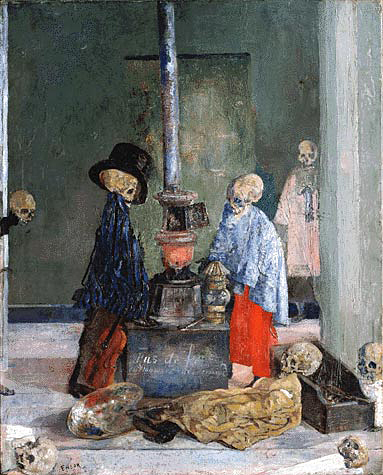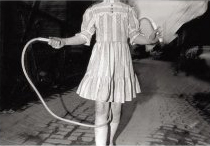 "Jump rope," Mark Cohen, All rights reserved
"Jump rope," Mark Cohen, All rights reservedFor years I've carried around a couple of black & white images by Mark Cohen in my head. One is the girl jumping rope (above) & then there's
this one. Both pictures, which use Cohen's signature technique -- wide-angle close-ups, flash, radical cropping -- have always intrigued me; but in all those years I never came across more than a few others -- all B & W -- & the only thing I ever heard about Cohen himself was that he shoots exclusively in Wilkes-Barre, PA, a down-on-its-luck former coal town.
So one late afternoon last week I skipped out from work & walked over to Hasted Hunt gallery to see
True Color, a collection of Cohen's color work from the 70s . It's a show of modestly sized dye-transfer prints -- grimey, edge-of-grotesque people shots. But I'm not attempting a review here. Without question, the pictures work. They're riveting. What I want to talk about is
how Cohen digs them out of ordinary life -- in effect creates a new way of seeing -- by an unusual way of shooting. Mostly, Cohen's method is surprise (another word for it might be ambush). Of course surprise is a strategy used by a lots of street shooters, but this is different. I've never seen anyone shoot strangers the way Cohen does in
this video.
There's something animal-like about Cohen's way of shooting. Like an animal -- or perhaps a snake -- on the hunt he moves through the crowd restlessly, before locking his attention on his "prey," (not necessarily a person or group; it could be legs, a torso, a piece of clothing, a hairdo). His approach is fast, fluid & silent. His "strike" -- typically a single photo from inches away accompanied by a small hand-held flash, -- is shockingly invasive. Nevertheless, its swiftness, the way Cohen instantly
unlocks his attention afterwards & floats away, apparently indifferent, reassures the startled subject. Did it really happen? Was that guy just crazy? Well, he's gone now, thank god. Some of his subjects appear not to have noticed at all.
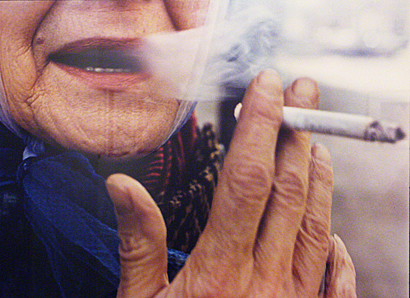 "Smoker" (rephotographed by this blogger with altered crop from Mark Cohen gallery print)
"Smoker" (rephotographed by this blogger with altered crop from Mark Cohen gallery print)I have never known a photographer this willing to risk humiliation or even violence in pursuit of an intuitive attraction that in all probability won't become a good picture (maybe Magnum photographer
Bruce Gilden comes close).
It's interesting that Cohen has lived in Wilkes-Barre his entire life, & perhaps even more interesting that his career there has been as a professional photographer. This is a guy who shoots sunny, flattering pictures all day, apparently, and then in his free time turns his hunt-&-snatch style to many of the same people & places -- this time unglossed. It's as though a Jekyl & Hyde personality is playing out in middle America. According to Cohen himself, shooting this way in his home town hasn't been easy.
“I’d shoot and walk away quick - I’d never talk to the people. To people who were watching what I was doing it looked like inappropriate behaviour,” he says...“The antagonism got worse as time went by. It looked like I was up to some suspicious activity - they’d say, why are you taking pictures? People would call the police - if that happened I could give an explanation. But people who didn’t call the police were worse. Because I had no explanation or credentials, people would demand an explanation and ask me why I was taking a picture of their house, their yard, their wife.”
“Sometimes people would take my licence plate number and find out where I lived,” says Cohen. “People like
William Klein who worked in big crowds in New York were relatively anonymous, but in small towns like Wilkes Barre, taking pictures looks suspicious to some people - especially since 9/11.”
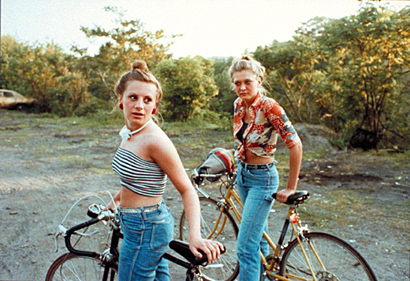 "Girls with bicycles," Mark Cohen, All rights reserved
"Girls with bicycles," Mark Cohen, All rights reservedNot surprisingly, the pigeonhole that curators & critics have reserved for Cohen doesn't quite fit for all his work. A cursory look at the online collection of
his pictures at George Eastman House reveals a number that are more Dr. Jekyl than Mr. Hyde. For the record, Cohen likes gardens, porches and backyards in bloom, & his joy in color is persistent, almost palpable (working seriously in color in the 70s makes him a pioneer of that media) . On occasion his pictures might even be described as lyrical (see above).
Yet, at least in his personal work, the Hyde aspect does seem ascendant. Cohen continues to shoot in Wilkes-Barre -- utterly familiar & resolutely unpicturesque -- perhaps as a way to encourage this. He doesn't completely understand why he takes the pictures he takes, but he understands as well as anyone. “They are a long series of pictures that are very unconsciously driven. They are more psychological than anything else,” he says. “They are also autobiographical in some ways. My work is about fear and approaching this fear and a lot of it may be to do with my own way of thinking. Maybe that’s why some of the pictures work. There’s something I do that I don’t even understand now - that’s why they have this mystery.”
(All quotes above from the blog, Colin Pantall's Writing.)
